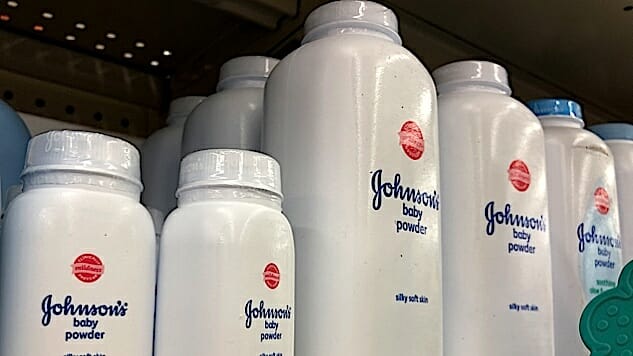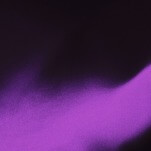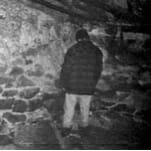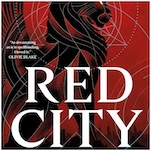The Joys of Capitalism, Part 483,323,323: Johnson & Johnson Knew Asbestos Was in Its Baby Powder, Did Nothing, People Died
Photo by Justin Sullivan/Getty
If some dyed-in-the-wool communist wrote this story as a work of anti-capitalist fiction, you would say it was too on the nose. It involves an evil company, a poisonous substance, death, sickness, and babies. As an argument against a corporate democracy, it’s just a little too good.
Alas, it’s real. Johnson & Johnson’s “raw talc and finished powders,” including its baby powder, contained asbestos from about 1971 to 2000, and they did everything in their power to hide it from both the public and regulators while taking a very, very long time to change anything.
We know this today in part because of Darlene Coker, who was dying of mesothelioma in 1997, had no idea why, and eventually concluded that it had something to do with the Johnson & Johnson Baby Powder she’d been using her whole life. She sued the company, they claimed it was “asbestos-free,” and because the burden of proof was on her, they didn’t have to turn over records or results—even after tests revealed that the mesothelioma was consistent with the fibrous asbestos often found in talc. Coker died in 2009.
Now, thanks to a Reuters special report, we know that J&J was lying. Per Reuters:
Two decades later, the material Coker and her lawyer sought is emerging as J&J has been compelled to share thousands of pages of company memos, internal reports and other confidential documents with lawyers for some of the 11,700 plaintiffs now claiming that the company’s talc caused their cancers — including thousands of women with ovarian cancer.
A Reuters examination of many of those documents, as well as deposition and trial testimony, shows that from at least 1971 to the early 2000s, the company’s raw talc and finished powders sometimes tested positive for small amounts of asbestos, and that company executives, mine managers, scientists, doctors and lawyers fretted over the problem and how to address it while failing to disclose it to regulators or the public.
Incredibly, while all this was happening, J&J also tried successfully to “influence U.S. regulators’ plans to limit asbestos in cosmetic talc products and scientific research on the health effects of talc.” In other words, at the same that they were hiding their own knowledge of asbestos in their products, they were trying to keep everyone else from even understanding the problem. These efforts took the place of, well, trying to actually fix it.
Over the years, the company repeatedly touted test results that showed no signs of absestos, while ignoring and suppressing the ones that did:
-

-

-

-

-

-

-

-

-

-

-

-

-

-

-

-

-

-

-

-

-

-

-

-

-

-

-

-

-

-

-

-

-

-

-

-

-

-

-

-








































